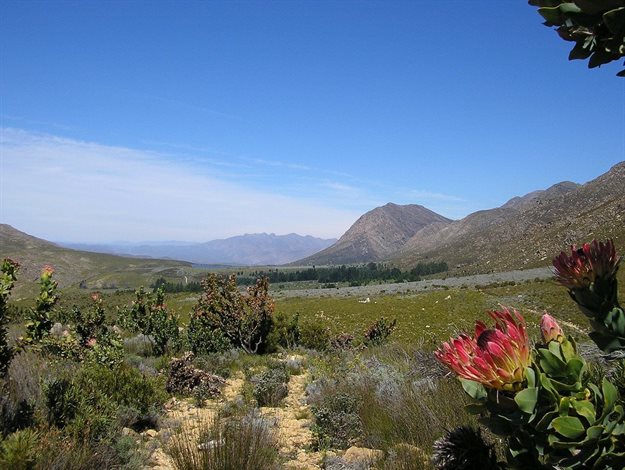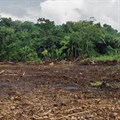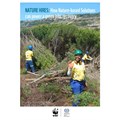Cabinet has approved the updated National Protected Areas Expansion Strategy and the revised National Biodiversity Framework in an effort to assist in addressing threats to biodiversity.
“The National Biodiversity Framework and the National Protected Areas Expansion Strategy are important existing policy instruments for protection of species and ecosystems,” the Department of Environment, Forestry and Fisheries said on Wednesday, 25 November.
These measures were approved during last week’s cabinet meeting.
“Through the release of the National Biodiversity Assessment by the South African National Biodiversity Institute in 2019, the country is able to better target future protected area expansion,” the department said.
The assessment has also assisted with South Africa’s national and international reporting obligations, including the state of environment reporting, and the Convention on Biological Diversity Country Report – reporting against Aichi Targets or the Sustainable Development Goals.
The Revised National Biodiversity Framework has been approved for public comment.
Critical areas highlighted in assessment report
“The sectoral plan addressed the biodiversity threats identified during the scientific assessment of the state of biodiversity and ecosystems in South Africa by the South African National Biodiversity Institute (SANBI). The findings were published in the National Biodiversity Assessment in 2019 which requires a review of the framework every five years,” the department said.
The most critical areas in the assessment report related to fresh water ecosystems, rivers and estuaries with fresh water fish being the most vulnerable of all the species.
“South Africa is a water scarce country and pressures on biodiversity such as illegal trade in species, land degradation, habitat loss and exponential population growth are key factors that risk infectious disease outbreaks such as Covid-19.
“Continued investment in healthy ecosystems in terms of management, conservation and restoration of ecosystems and biodiversity is crucial for water, food and energy security, disease and natural disaster control, climate change resilience; and for post-Covid-19 economic recovery,” the department said.
Katie Woolaston and Judith Lorraine Fisher 30 Oct 2020 Strong commitment, cooperation
Strong commitment and cooperation across all spheres of government is essential for the implementation of the National Biodiversity Framework (NBF) as one of the National Development Plan’s accelerators.
The 2019-2024 framework serves to coordinate and align efforts of the various key role-players in the conservation and management of South Africa’s biodiversity in support of sustainable development.
“The review of the framework was necessary so that a different approach can be taken in terms of biological management, an area in which there have been a number of changes since the first NBF was developed more than 12 years ago.
“The proposed framework notes while there are a range of national policies, strategies, frameworks and other systems, either in place or being developed, to guide the work in certain areas of the biodiversity sector, an integrated, coordinated and consistent approach to biodiversity management is highlighted for the sector,” the department said.
It provides for the identification of priority areas for conservation action and for the establishment of protected areas.
It also reflects on regional cooperation concerning biodiversity management in Southern Africa and identifies interventions that can be used to accelerate implementation of high-level priorities of the National Biodiversity Strategy and Action Plan (NBSAP) over the next five years.
Monitoring the implementation of the NBF will be coordinated by the NBSAP Forum.
The updated National Protected Areas Expansion Strategy has been approved for implementation.
Conserving, managing SA's natural wealth
As one of the 17 mega-biodiverse countries in the world, the country’s protected areas are the cornerstone of South Africa’s approach to conserving and managing the wealth of biodiversity assets and ecological infrastructure.
Effective management of biodiversity contributes to creating jobs in the tourism and nature conservation section, while serving as areas for research. Protected areas also hold multiple benefits for development.
The strategy presents a 20-year approach for the expansion of protected areas and highlights how the country can become more efficient and effective in allocating the scarce human and financial resources available for protected area expansion.
It sets protected area targets, maps priority areas for protected area expansion to ensure no further ecosystems become critically endangered, and makes recommendations on mechanisms to achieve this. The common set of targets and spatial priorities enables improved coordination between all role-players involved in protected area expansion.
“The targets are designed to achieve overall Convention on Biological Diversity Aichi targets, while optimally shifting the emphasis onto high biodiversity value ecosystems. The identified priority areas cover a 190,109km2, in addition to the 73,610km2 of mostly marine areas currently under negotiation,” the department said.
The strategy is reviewed and updated every five years to meet current needs.










































